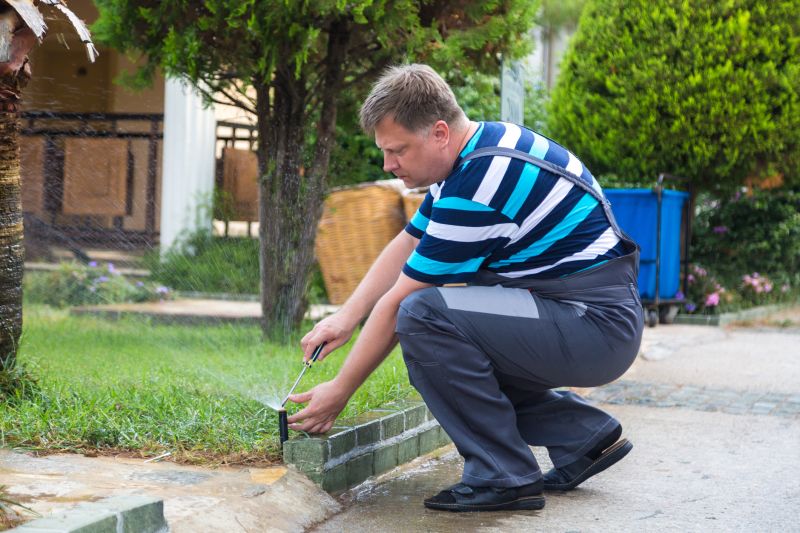Underground Sprinkler Repair Services

Spring is an ideal time to assess and repair underground sprinkler systems before the watering season begins.

Late fall allows for repairs after the active season, preventing issues during winter and preparing for spring.

Repairs should be performed promptly when system malfunctions such as leaks or broken heads are detected.

Ways to make Underground Sprinkler Repairs work in tight or awkward layouts.

Popular materials for Underground Sprinkler Repairs and why they hold up over time.

Simple add-ons that improve Underground Sprinkler Repairs without blowing the budget.
Underground sprinkler repairs are essential for maintaining an efficient irrigation system. Properly functioning sprinklers ensure even water distribution, conserve water, and promote healthy landscaping. Regular inspections can identify issues like broken heads, leaks, or wiring problems that may not be immediately visible. Statistics indicate that neglected sprinkler systems can waste up to 50% of water due to leaks and inefficiencies. Addressing repairs promptly can lead to significant water savings and cost reductions over time.
Seasonal timing plays a crucial role in underground sprinkler repairs. Performing repairs in the spring before the watering season starts helps prevent system failures during peak usage. Conversely, late fall repairs can resolve issues after the active season, avoiding winter damage and ensuring readiness for the next cycle. Immediate repairs upon noticing malfunctions can prevent more extensive damage and costly replacements.
Broken sprinkler heads, leaking valves, damaged wiring, and clogged nozzles are typical issues requiring repair.
Timely repairs improve system efficiency, reduce water waste, and extend the lifespan of the irrigation system.
Uneven watering, unusually high water bills, or visible leaks indicate the need for underground sprinkler repairs.
Addressing repairs early can prevent costly replacements and conserve water, leading to lower utility bills.

Replacing damaged heads restores proper spray pattern and coverage.

Locating and fixing leaks prevents water waste and reduces utility costs.

Repairing or replacing valves ensures correct zone operation and system efficiency.

Correcting wiring issues maintains reliable system control and operation.
| Repair Type | Best Time to Perform |
|---|---|
| Spring System Inspection | Early spring before watering begins |
| End-of-Season Maintenance | Late fall after active watering |
| Immediate Repairs | As soon as malfunctions are detected |
| Pre-Season Testing | Prior to the start of the new season |
| Post-Repair Checkup | Following repairs to verify system performance |

Inspect for leaks, broken heads, and wiring issues before the watering season.

Perform repairs and winterize the system to prevent damage during cold months.

Fix leaks promptly to conserve water and prevent further damage.

Address wiring problems to ensure reliable system operation.
Timely underground sprinkler repairs are vital for maintaining an efficient irrigation system. Regular inspections and prompt fixes help prevent water waste and reduce utility costs. Understanding the optimal timing for repairs—such as early spring and late fall—can enhance system longevity and performance. Addressing issues as they arise minimizes damage and ensures the landscape remains healthy and well-watered.
Interested parties are encouraged to contact for further information or to schedule repairs. Proper maintenance and timely intervention can optimize system performance and conserve resources.
